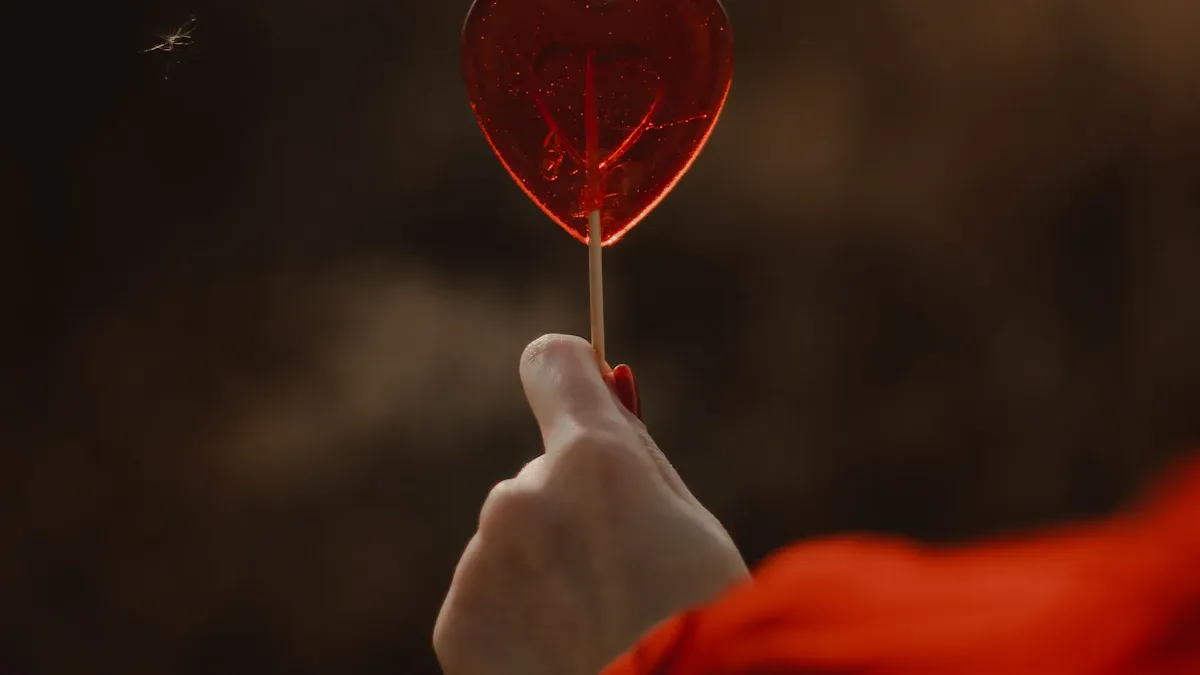How to Extend the Battery Life of Your Flashlight or Headlamp

A flashlight is one of those tools you don’t think about until you need it most. Whether you’re camping, fixing something in a dark corner, or dealing with a power outage, reliable illumination can make all the difference. But what happens when the batteries die too soon? That’s where a few simple tips can save the day. By taking care of your flashlight and practicing smart flashlight using habits, you’ll not only extend its battery life but also ensure it’s ready when you need it. Plus, you’ll save money and reduce waste in the process.
Here’s a tip: Always choose quality batteries and store them properly to keep your flashlight dependable for longer.
Key Takeaways
Pick good batteries. Rechargeable ones save money and cut waste. Disposable batteries work well for emergencies.
Change brightness settings. Lower brightness helps batteries last longer. Use it for tasks needing less light.
Store batteries the right way. Keep them cool and dry. Take them out of devices when not using to avoid leaks or harm.
Choosing the Right Batteries

Rechargeable vs. Disposable Options
When it comes to flashlight using, the type of battery you choose can make a big difference. Rechargeable and disposable batteries each have their strengths, so understanding their differences helps you make the right choice. Here's a quick comparison:
Feature | Rechargeable Batteries | Disposable Batteries |
|---|---|---|
Longevity | Save money over time, consistent brightness | Excellent long-term storage, up to 10 years |
Replacement Speed | Requires charging, may take time | Quick and easy replacements in seconds |
Cost Over Time | Less than $1 annually for charging | Can exceed $100 annually for replacements |
Performance in Cold Weather | Performs well | May not perform as well |
Environmental Impact | Generates more waste |
Rechargeable batteries save money and reduce waste, making them ideal for frequent flashlight using. On the other hand, disposable batteries are perfect for emergencies due to their long shelf life and quick replacement.
Best Batteries for Flashlight Using
Not all batteries are created equal. For your flashlight or camping headlamp, lithium batteries are often the best choice. They provide consistent power, work well in extreme temperatures, and last longer than alkaline options. Rechargeable lithium-ion batteries are especially great for camping headlamps, as they combine durability with eco-friendliness. If you prefer disposable batteries, go for high-quality alkaline ones from trusted brands to ensure reliability.
Avoiding Counterfeit or Low-Quality Batteries
Using counterfeit or low-quality batteries can be risky. They may damage your flashlight or camping headlamp and even pose safety hazards. As one expert noted:
There have been reported incidents of counterfeit and/or inferior-quality lithium batteries developing internal shorts that have led to fires and/or explosions.
Additionally, these batteries can reduce runtime and performance. Always buy from reputable sources and avoid deals that seem too good to be true. Your flashlight deserves the best to keep you safe and prepared.
Proper Usage Practices
Adjusting Brightness Settings
One of the best practices for extending the battery life of your flashlight or camping headlamp is to adjust the brightness settings based on your needs. Higher brightness levels might seem tempting, but they drain batteries much faster. On the other hand, lower brightness settings can significantly extend the runtime. For example:
Using a headlamp at just 20 lumens can provide up to 150 hours of light, perfect for emergencies like signaling or navigation.
For tasks like reading, reducing the output to 50 lumens can give you around 20 hours of usage.
Whenever possible, use lower brightness settings for activities that don’t require intense light. This simple adjustment not only saves battery life but also prevents overheating protection from kicking in, which can impact performance enhancement.
Avoiding Frequent On-Off Cycles
Turning your flashlight or camping headlamp on and off repeatedly might seem harmless, but it can actually drain the batteries faster than continuous use. Constantly adjusting the light disrupts the flow of power, leading to premature battery depletion. Instead, try to keep the light on at a consistent brightness level when you’re using it. This approach helps maintain a steady runtime and ensures your flashlight is ready when you need it most.
Using Energy-Saving Modes
Many modern flashlights and camping headlamps come with energy-saving modes designed to maximize battery life. These modes often reduce the brightness slightly while still providing enough light for most tasks. If your device has this feature, make it a habit to use it whenever possible. Energy-saving modes not only extend runtime but also help avoid overheating, which can damage your flashlight over time. By using these modes, you’ll get better performance and longer-lasting batteries.
Maintenance and Cleaning

Inspecting and Cleaning Battery Contacts
Battery contacts are the lifeline of your flashlight or camping headlamp. Dirty or corroded contacts can disrupt the flow of power, reducing performance. Regular check-ups are essential to keep them in good shape. Start by inspecting the contacts for dirt, dust, or corrosion. If you notice any buildup, gently clean the contacts using a cotton swab dipped in rubbing alcohol. This simple cleaning step ensures a strong connection and prevents unnecessary power loss.
For proper care techniques, avoid using abrasive materials that could damage the contacts. A soft cloth or a specialized contact cleaner works best. Routine maintenance like this not only extends battery life but also keeps your flashlight or headlamp reliable when you need it most.
Preventing Corrosion in Battery Compartments
Corrosion in battery compartments is a common issue, but you can prevent it with good maintenance. Here are some common causes of corrosion and how to avoid them:
Overfilled batteries can leak water, triggering chemical reactions.
Damaged or leaking batteries often cause electrolyte buildup.
Overcharging generates high heat, leading to corrosion.
To prevent these problems, apply a thin layer of dielectric grease to the battery terminals. This protective coating reduces the risk of corrosion. Additionally, follow proper charging practices to avoid overheating. Regularly inspect the compartment during your check-ups to catch early signs of damage. These simple care habits will keep your camping headlamp or flashlight in top condition.
Replacing Batteries Before Full Discharge
Waiting until your battery is completely dead can harm both the battery and your device. When batteries discharge fully, they may leak or swell, damaging the flashlight or camping headlamp. Replace them as soon as you notice a significant drop in brightness. This proactive approach prevents troubleshooting headaches and ensures your device stays functional.
Rechargeable batteries especially benefit from this practice. Partial discharges and regular recharges help maintain their health. By replacing batteries before they’re fully drained, you’ll extend their lifespan and avoid unnecessary wear on your flashlight or headlamp.
Storage Tips
Correct Storage Practices for Batteries
Storing your batteries the right way can make a big difference in their shelf life and performance. Proper storage starts with keeping them in a cool, dry place. Ideally, store alkaline batteries at around 60°F and lithium batteries between 68°F and 77°F. Avoid humid areas like basements or bathrooms, as moisture can damage the batteries.
It’s also a good idea to keep new and old batteries separate. Mixing them up can lead to confusion and uneven performance. If possible, store batteries in their original packaging. This prevents the terminals from touching and reduces the risk of short circuits. For rechargeable batteries, aim to store them at about 50% charge to avoid over-discharge. Following these correct storage practices ensures your flashlight or headlamp is always ready when you need it.
Storing Batteries Separately from Devices
Leaving batteries inside your flashlight when it’s not in use might seem harmless, but it can cause problems. Batteries can slowly drain even when the device is off, reducing their lifespan. Worse, if a battery leaks, it can damage the internal components of your flashlight.
To avoid these issues, remove the batteries when you’re not using the device for an extended period. Store them in a safe, dry place away from the flashlight. This simple habit protects both the batteries and your device, ensuring they last longer and perform better.
Avoiding Extreme Temperatures
Extreme temperatures are a battery’s worst enemy. Cold weather can make the electrolyte inside the battery thicker, slowing down the movement of ions. This reduces performance and can even cause permanent damage, like lithium plating, which may lead to short circuits. On the other hand, high temperatures speed up chemical reactions inside the battery. While this might temporarily improve performance, it significantly shortens the battery’s lifespan.
To protect your batteries, avoid leaving them in places like a hot car or freezing garage. Stick to moderate temperatures, and your flashlight batteries will thank you with longer life and better reliability.
Advanced Tips for Longevity
Implement Proper Charging Techniques
If you’re using a rechargeable camping headlamp or flashlight, charging it the right way can make a big difference in its lifespan. Here are some tips to help you implement proper charging techniques:
Charge your batteries when they drop to around 20% and unplug them once they reach 80%. This keeps the battery healthy and prevents overcharging.
Avoid using your flashlight while it’s charging. Doing so can cause unreliable charge readings and reduce battery efficiency.
Store your batteries in a cool, dry place when not in use. Check them periodically if you’re storing them for a long time.
By following these steps, you’ll not only extend the lifespan of your batteries but also ensure your flashlight is always ready when you need it.
Using Smart Chargers for Rechargeable Camping Headlamps
Smart chargers are a game-changer for anyone relying on a rechargeable camping headlamp or flashlight. These chargers automatically adjust the charging rate to prevent overcharging or overheating. They also stop charging once the battery is full, which helps with lifespan maximization.
When choosing a smart charger, look for one designed specifically for lithium-ion batteries. This ensures safe and efficient charging. Using a smart charger not only protects your batteries but also saves you the hassle of constantly monitoring the charging process. It’s a small investment that pays off in the long run.
Monitoring Battery Health with Testers
Keeping an eye on your battery’s health is just as important as proper charging. Battery testers are handy tools that let you check the voltage and capacity of your batteries. They help you identify weak or damaged batteries before they cause problems.
Make it a habit to test your batteries regularly, especially if you use your flashlight or headlamp frequently. This proactive approach ensures you’re always prepared and prevents unexpected failures. A healthy battery means a reliable flashlight, and that’s something you can count on.
Taking care of your flashlight or headlamp doesn’t just save you money—it helps the planet too. By choosing quality batteries, using them wisely, and storing them properly, you’ll enjoy better performance and longer-lasting devices. Plus, adopting sustainable battery practices can:
Reduce waste through recycling and recovery of valuable materials.
Protect ecosystems by promoting responsible mining and resource conservation.
Lower carbon emissions by shifting to cleaner energy sources.
These small changes make a big difference. Start today and enjoy reliable light while contributing to a healthier environment.
FAQ
How often should you clean your flashlight or headlamp?
You should clean it every few months or after heavy use. This keeps the battery contacts and compartments free from dirt and corrosion.
Can you mix different types of batteries in your flashlight?
No, mixing battery types can cause uneven discharge and damage your flashlight. Always use the same type and brand for optimal performance.
What’s the best way to store a headlamp for long-term use?
Remove the batteries and store the headlamp in a cool, dry place. This prevents battery leakage and keeps the device in good condition.
See Also
Maximize Your Flashlight's Lifespan for Extended Usage
Boost Your Flashlight's Battery Life With These Tips
Key Maintenance Tips to Keep Your Flashlight Functional
